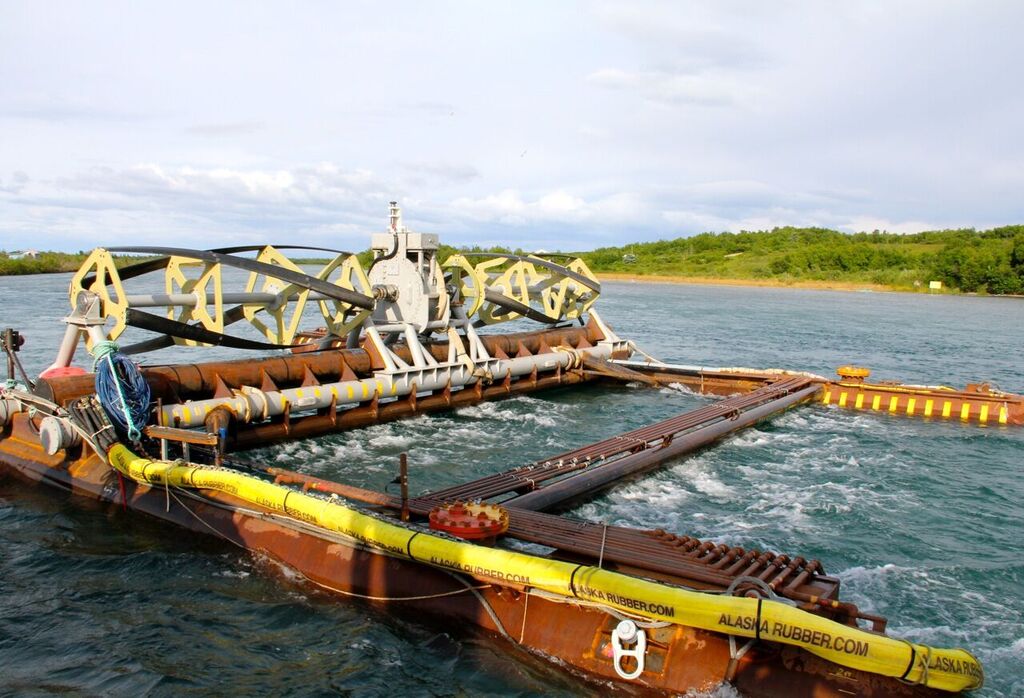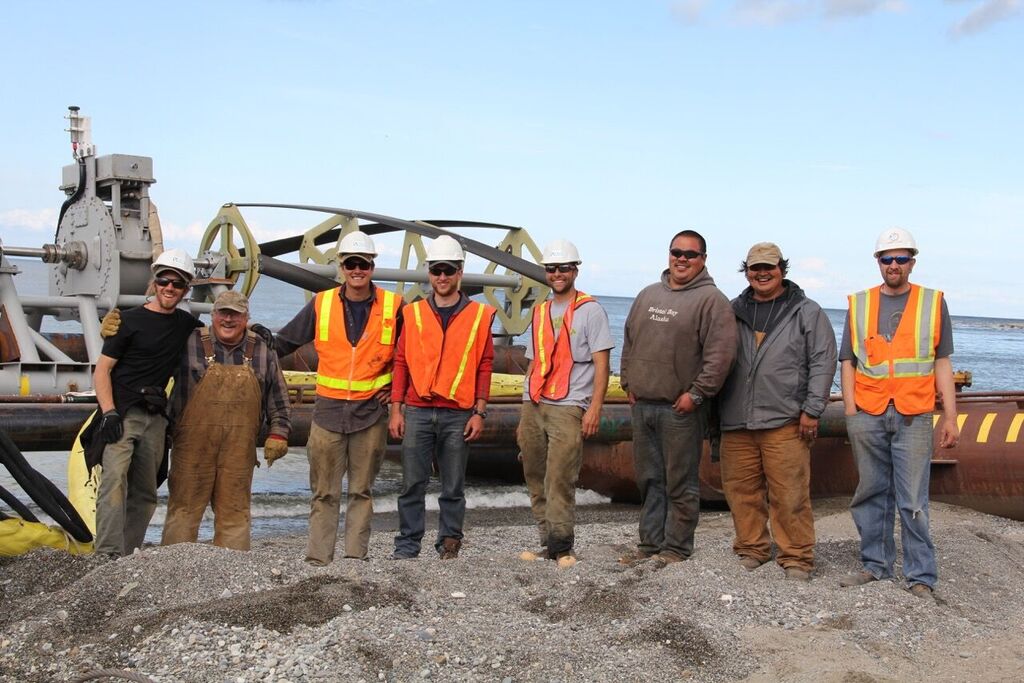An effort to bring renewable energy to western Alaska was recognized Tuesday by the federal government. The Ocean Renewable Power Company was named the 2016 Outstanding Stewards of America’s Waters for its ability to bring hydropower to the Bristol Bay village of Igiugig.

The Kvichak River flows out of Lake Illiamna and into Bristol Bay. It helps support the world’s largest sockeye salmon run in the world. More recently, it’s been helping fuel the nearby village of Igiugig
Randy Alvarez has lived in Igiugig for over thirty years. He was born and raised in Naknek, another small town in Bristol Bay. As a longtime resident, Alvarez is familiar with the fact that fuel is often two or three times as expensive in the bush as it is on the road system. He’s also keenly aware because of his job.
“I’ve commercial fished since I was old enough to go in the boat with my father and I still do it. I’m planning on doing it as long as I can,” Alvarez said.
But it was a big surprise to his fellow fishermen when Alvarez got behind a project that would test an underwater turbine in the Kvichak.
“Putting a turbine in the river was a big concern for a lot fishermen,” said Alvarez.
But it wasn’t going to the be first time the turbine was used in Alaskan waters. The first prototype was tested in the Tanana River near Fairbanks.
“That river is very silty,” Alvarez said. “Not only is it silty, it has lots of woody debris in it and other challenges.”
Monty Worthington is the Ocean Renewable Power Company’s director of project development in Alaska. He says debris did what it does best—it got stuck. Worthington says silt made it so they couldn’t see what else besides water was moving through the underwater blades. So Worthington’s team turned to Bristol Bay’s Kvichak River.

“The Kvichak River is fairly unique in Alaska in that it’s a large, fast-flowing, and clear river,” said Worthington.
The turbine, or RivGen, as Worthington calls it, was lowered into the Kvichak for its first test run from August until September of 2014. Randy Alvarez said they placed the turbine very strategically.
It was about 20 feet of water where they put it in. They put it in the deepest part of the river so that ice and anything floating downriver on top, or even boats could go over the top of it.”
RivGen is outfitted with five underwater cameras. The crew kept a close eye on all the underwater action during its first test run. They didn’t see any salmon getting stuck, so it was put back to work the following summer. Alvarez explains the second test run was from July until September, overlapping with the more than a million sockeye running up the Kvichak.
“After two years of studying it, it didn’t have much impact at all, which was a great relief to us,” Alvarez said. “It showed that we can have it and not worry about it chewing up our salmon.”
Those results earned the Ocean Renewable Power Company this year’s Outstanding Stewards of America’s Waters Award, but the real reward won’t be known until the next phase of the project, when Worthington begins work on a commercial turbine. Alvarez says a commercial RivGen could cut Igiugig’s energy bill in half,
“Forty years ago, it was different. It didn’t cost much money to live in villages. Now, it’s expensive,” said Alvarez. “So we need the jobs and we need cheaper electricity.”
Emily Russell is the voice of Alaska morning news as Alaska Public Media’s Morning News Host and Producer.
Originally from the Adirondacks in upstate New York, Emily moved to Alaska in 2012. She skied her way through three winters in Fairbanks, earning her Master’s degree in Northern Studies from UAF.
Emily’s career in radio started in Nome in 2015, reporting for KNOM on everything from subsistence whale harvests to housing shortages in Native villages. She then worked for KCAW in Sitka, finally seeing what all the fuss with Southeast, Alaska was all about.
Back on the road system, Emily is looking forward to driving her Subaru around the region to hike, hunt, fish and pick as many berries as possible. When she’s not talking into the mic in the morning, Emily can be found reporting from the peaks above Anchorage to the rivers around Southcentral.




